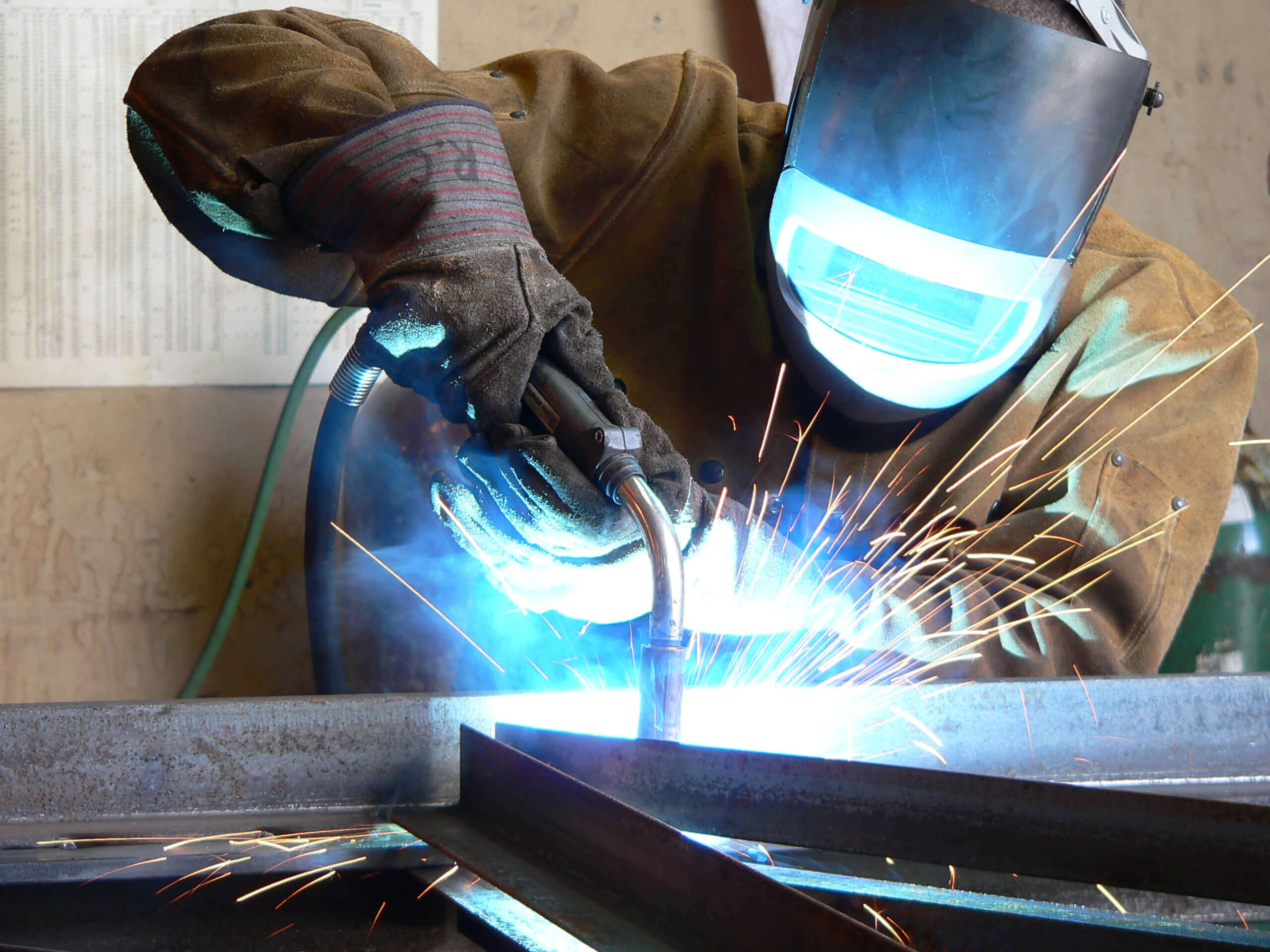Controlling Weld Distortion


Weld distortion or deformation can occur as a result of the non-uniform expansion and contraction of the weld and base metal during the heating and cooling cycle.
Stresses form in the weld as a result of the changes in volume, particularly if the weld is restrained by the fixed components or other materials surrounding it. If the restraints are partly removed, these stresses can cause the base material to distort and may even result in tears or fractures. Of course, distortion can be very costly to correct, so prevention is important.
There are various types of distortion and dimensional change including longitudinal; transverse; angular; twisting and bowing. Two or more types of distortion may occur at the same time.
There are many factors that can cause welding or cutting distortion and it is very difficult to predict the exact amount of distortion that is likely to occur. Some of the factors that should be considered include the degree of restraint; the thermal and other properties of the parent material; inherent stresses induced from previous metal-working processes (such as rolling, forming and bending); design of weldment; accuracy of manufacture and the nature of the welding process itself – the type of process, symmetry of the joint, preheat and the number and sequence of welds required.
The effects of weld shrinkage can never be entirely eliminated but you can keep them to a minimum by taking a few practical steps as follows:
When cutting, it is possible to limit distortion by supporting the plate so it can expand freely without buckling; ensuring the plate is flat; allowing sufficient weld material when cutting in from corners and using a jig-saw pattern to lock the cut pieces together when multiple cutting.
Distortion can be avoided or significantly reduced when welding structural steelwork by using fixing devices, such as strongbacks or wedges to pre-set seams in plates; flexible clamps to bring parts to the required gap before welding or clamps for thin sheet welding. Longitudinal stiffeners can also be used to limit this type of bowing. It is also important to use the correct welding sequence, such as welding the frame before a cover plate. Pre-bending or pre-setting techniques may also help to prevent distortion and water can be used to cool the process.
Pipes and tubes can suffer distortion after welding, and this can be prevented by using strongbacks attached with straps and wedges inside or outside the longitudinal joint; using backing strips to overcome transverse shrinkage or pre-setting or using back to back pairs when welding flanges to pipes.
In summary, if welding distortion is likely to be a problem, it can be avoided or minimised by advance planning and following best practice.
This can be achieved by mechanically removing the bowing using a press, shot peening, pneumatic hammering or stress-free vibration. Alternatively, a sizing fixture can be used to restore the distorted fabrication to its intended dimensions. Different heating techniques can also be used to correct distortion by applying local or spot heating in various ways.
Air Products is a leading supplier of quality shielding gases. Our qualified welding experts can help work with you to choose the optimal Maxx® welding gas and set-up in order to control and limit weld distortion.

An industry leading comprehensive guide to gas shielded arc welding and oxy-fuel cutting.